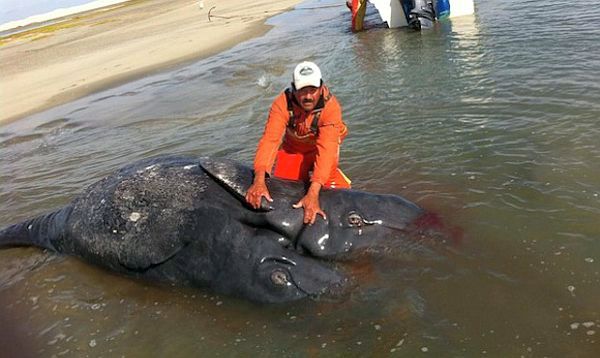Baja California Sur, Mexico - Scientists in Mexico's Laguna Ojo de Liebre, or Scammon's Lagoon, have discovered conjoined gray whale calves. It might be the first documented case of conjoined twin gray whales.
Conjoined twins have occurred in other species, such as fin, sei, and minke whales, but a database search at the Natural History Museum of Los Angeles County did not reveal published instances of conjoined gray whale twins - or what might also be referred to as Siamese gray whale twins.
Unfortunately, the twins discovered in Scammon's Lagoon did not survive. Most likely, they were miscarried because the carcass is only about seven feet long, versus the normal 12-16 feet for newborn gray whales.
Alisa Schulman-Janiger, an American Cetacean Society researcher, pointed out that the twins were underdeveloped and said that pointed to a premature birth. She also wondered about the fate of the mother. The twins' carcass has been collected for study.
Gray whales are arriving in Scammon's Lagoon and other lagoons along the Baja California peninsula, after a nearly 6,000-mile journey from Arctic home waters. They give birth during the southbound journey, or in the lagoons, and nurse their calves for several weeks before migrating back to the Bering and Chukchi seas.
NOAA estimates the Pacific gray whale population to number about 21,000 animals.
Original Story


